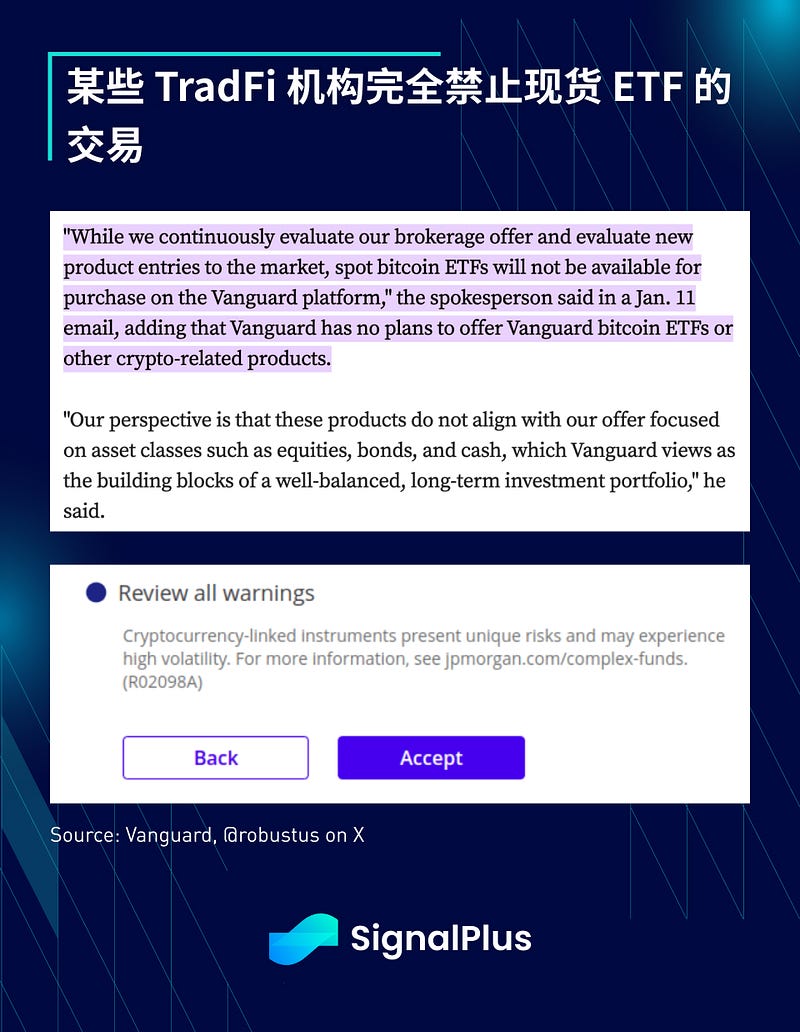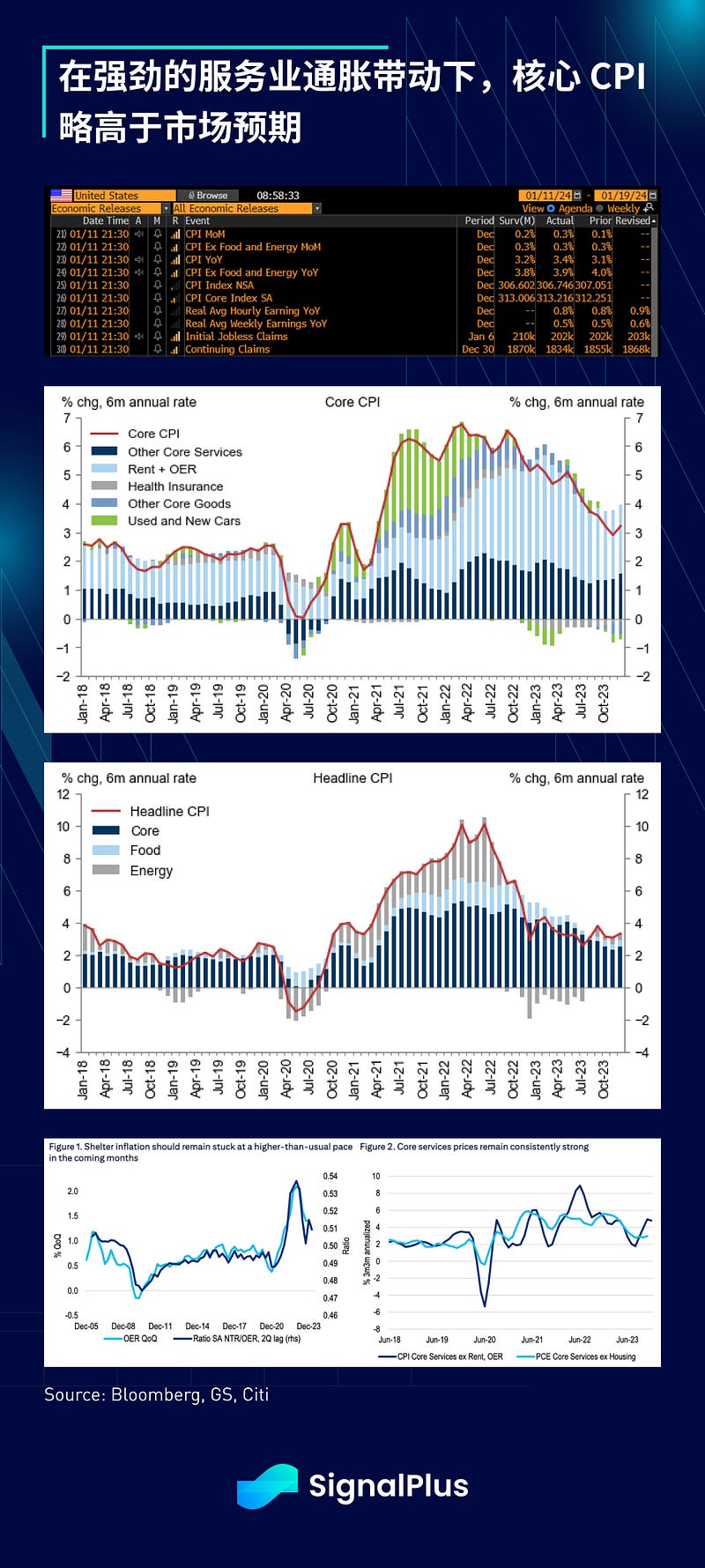SignalPlus Macro Research Report: BTC Spot ETF First Day Trading Volume Reaches 4.6 Billion USD


The U.S. Bitcoin spot ETF has set a record, with a first-day trading volume of $4.6 billion. Leading the way was Grayscale's GBTC with a trading volume of $2.1 billion, followed by Blackrock's IBIT with $1 billion. Bloomberg ETF analyst Eric Balchunas called it "undoubtedly the largest first trading day in ETF history." The 11 spot ETFs had over 700,000 individual trades, double the trading volume of Nasdaq QQQ, indicating significant participation from small-scale investors.

However, it wouldn't be cryptocurrency news without a warning. Reports from multiple sources indicate that some brokerages and banks are reluctant to promote or allow trading of these ETFs, with Vanguard explicitly stating that it will not offer these products on its platform, citing inconsistency with its core services.

Nevertheless, the door has been opened. A "dollar-settled" Bitcoin investment vehicle has created a market for TradFi investors that does not require delivery; they can stay within the existing fiat framework without venturing into blockchain. For many investors and institutions, they can now trade BTC (and soon ETH) as a regular asset class without engaging in tedious and often ideological debates about the meaning of cryptocurrency. Unsurprisingly, within just 24 hours, there were reports that issuers began applying for ETFs with covered call strategies, which should quickly spread to various "actively managed ETFs" involving options and leverage, strategies that are already very common in the TradFi space. For cryptocurrency participants, 2024 will undoubtedly be an exciting year, especially in the derivatives space.

Back in the TradFi realm, the U.S. core CPI data released yesterday was slightly above market expectations (0.31% vs 0.26%), primarily driven by persistently high used car prices, clothing, core services, and owners' equivalent rent. Food and energy prices rose by 0.2% and 0.4%, respectively, pushing the overall CPI up by 0.3% month-over-month. In the long term, the core CPI has hovered around an annualized rate of 3-4% for most of the past six months, still well above the Federal Reserve's long-term target, primarily supported by strong inflation in housing and non-housing services.
While this data is unlikely to change the market's outlook on the Federal Reserve, it may limit the ability of dovish officials to speak out without straying too far from the overall course. The probability of a rate cut in March remains stable at around 65-70%, and the market still expects a total of 150 basis points in rate cuts by the end of 2024.

The Federal Reserve's well-known hawkish official Mester stated, "I think a rate cut in March may be too early; we need to see more evidence." Since this statement was not particularly hawkish, the market actually interpreted it as dovish. She previously pointed out after the December FOMC meeting that the market had priced in rate cuts from the Federal Reserve too far in advance. Therefore, yesterday's comments were seen as a small step toward accepting an impending rate cut, with bond yields steepening by about 6 basis points, and the 2-year yield falling by 9 basis points to 4.25%.











